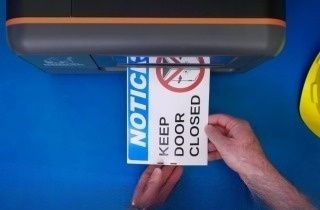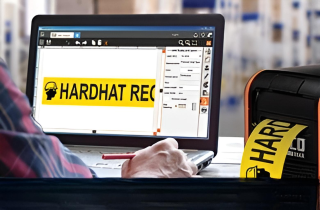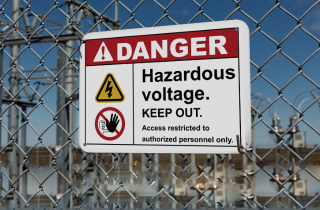Stop Electrical Explosions Before They Start with Circuit Analysis

What Causes an Arc Blast?
Electricity powers nearly every industrial process—but when something goes wrong, it can unleash extreme, destructive energy. One of the most severe outcomes of electrical failure is an arc blast, a type of electrical explosion caused by a short circuit.
A short circuit is the flow of current through an unintended path of lower resistance. Short circuits result from unintended connections to ground, two points of different voltages coming into contact, or two phases contacting each other. In many cases the flow of current is through a near-zero resistance connection, resulting in very high current levels that can create an arc blast.
Conducting a short circuit analysis helps facilities detect these vulnerabilities before they escalate, preventing injury, equipment damage, and costly downtime. It’s a critical step toward ensuring compliance with NFPA 70E and maintaining a safer electrical system overall.
Short Circuits and the Danger of Arc Blast
A short circuit current can be very large. This can result in large, rapid releases of energy in the form of heat, intense magnetic fields, and even potentially as explosions known as an arc blast. The heat can damage or destroy wiring insulation and electrical components. An arc blast produces a shock wave that may carry vaporized or molten metal, and can be fatal to unprotected people who are close by.
The combination of radiant heat and explosive force can lead to devastating injuries and long-term facility damage. Proper fault detection, electrical maintenance, and protective devices are the key to preventing these electrical explosions.
What are Bolted, Arcing, and Ground Faults?
A clear understanding of fault types is vital for performing a proper short circuit analysis and controlling arc blast hazards.
-
Bolted Faults: Caused by a direct, solid connection between conductors of different voltages or to ground. Because no arc forms, the current rises sharply, tripping protective devices quickly. If strong enough, however, the resulting force can still lead to an arc blast.
-
Arcing Faults: Occur when current flows through the air between unconnected conductors. This produces intense heat, often resulting in fires, arc flashes, or full electrical explosions.
-
Ground Faults: Created when electricity travels through an unintended low-resistance path to ground. When that path includes a person, burns and cardiac arrest can occur.
Symmetrical and Asymmetrical Fault Currents
In polyphase electrical systems, faults can appear as symmetrical or asymmetrical. A polyphase system may experience either a symmetrical or an asymmetrical fault. A symmetrical fault current is one that affects all phases equally. If just some of the phases are affected, or the phases are affected unequally, then the fault current is asymmetrical.
Although symmetrical faults are relatively simple to analyze, asymmetrical faults are more difficult to analyze, but they are the more common type of fault. Accurate short circuit analysis ensures both types are addressed, reducing arc blast and electrical explosion risks.
Protective Devices for Short Circuit Analysis and Arc Blast Prevention
Protective devices are designed to detect a fault condition and shut off the electric current before there is significant arc blast damage. There are a number of different types of protective devices to ensure electric hazards don't surpass their arc flash boundary distance and keep workers safe the two most common are:
- Fuses and Circuit Breakers
-
Fuses and circuit breakers are used to protect an electrical circuit from an over-current situation, usually resulting from a short circuit, by cutting off the power supply. Fuses can only be used once. Circuit breakers may be reset and used multiple times.
- Ground Fault Interrupter (GFI)
-
This is a device that detects when the current flow in the energized conductor does not equal the return current in the neutral conductor. The GFI protects people by quickly cutting off the current flow preventing injuries resulting from shock. Ground Fault Interrupters are typically used in homes for bathroom, kitchen, and outdoor electrical sockets. The GFI will typically be built into the electrical socket.
A GFI does not provide over-current protection, and the circuit that includes a GFI will also include a fuse or circuit breaker.
In addition to fuses, circuit breakers, and GFIs, there are electrical protection devices that:
- Detect changes in current or voltage levels
- Suggest an arc flash protection boundary
- Monitor the ratio of voltage to current
- Provide over-voltage protection
- Provide under-voltage protection
- Detect reverse-current flow
- Detect phase reversal
Benefits of Short Circuit Analysis for Arc Blast Prevention
A thorough short circuit analysis helps prevent unplanned downtime, injuries, and costly equipment damage. It also ensures labeling and system design align with NFPA 70E and NEC 110 requirements.
Key benefits include:
- Helps avoid unplanned outages and downtime
- Is critical for avoiding interruptions of essential services
- Identifies an appropriate arc flash boundary distance
- Reduces the risk of arc blast and electrical explosions
- Increases safety and protects people from injuries
- Determines the level and type of protective devices that are needed.
- Provides the information needed for NEC and NFPA required labels
- Keeps you in compliance with NEC requirements
How is Short Circuit Current Calculated?
NEC 110 requires that a short circuit analysis be done for all electrical equipment and panels. The two most common standards for short circuit current calculations are the ANSI/IEEE C37.010-1979 standard and the International Electrotechnical Commission (IEC) 60909 standard.
The ANSI C37.010 standard was intended to be used for power circuit breaker selection, but it does provide the information needed for NEC 110 required labeling. The IEC 60909-3:2009 standard is more generic. It is intended to provide general guidelines for short-circuit analysis of any asymmetrical short circuit in a three-phase 50 Hz or 60Hz A.C. electrical system.
Either the ANSI or the IEC short circuit calculation method can be used. They have been compared and found to produce similar results. The ANSI method is commonly used in short circuit current calculation software. Some feel that the IEC method lends itself to manual calculations.
Arc Blast Solutions from DuraLabel
Easily design and print arc blast safety signs any time you need them, onsite or in the field with . This printer also serves as an excellent facility-wide industrial labeling system to print signs and labels for all kinds of applications and environmental conditions indoors and out.
Get help crafting a system that will provide the safety communication you need. Call 1-888-789-5952 and one of our experts will guide you through the process.
Learn more about electrical safety with the DuraLabel Electrical Safety Instant Action Guide. This guide will improve your warehouse electrical safety by ensuring OSHA/NFPA compliance and utilizing visual communication. Download our free guide on electrical safety below.
Read Next:
Related Resources

NEC 110 Labeling Requirements
The most recent NEC Article 110 had new labeling requirements updated in 2011. The latest labels are for ...
Read
Available Fault Current
The National Electric Code, or NEC, requires that equipment be marked with the available fault current, and ...
Read
Solar Panel Safety Starts with the Right Labels
What Safety Labels Are Required for Solar Panel Installations? Solar panel safety depends on clear labels ...
Read.png)





